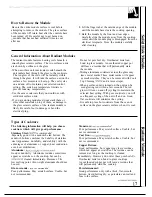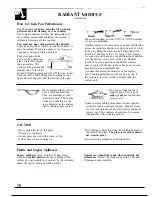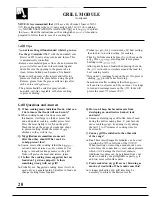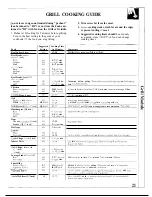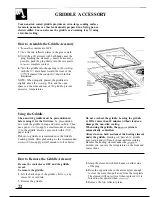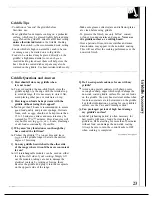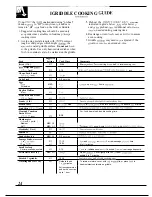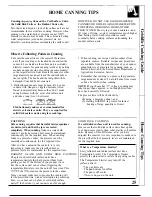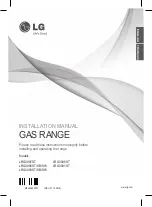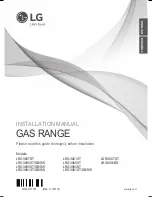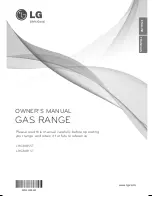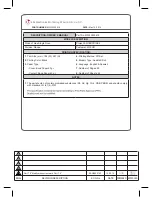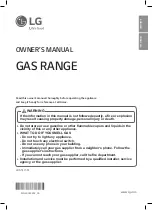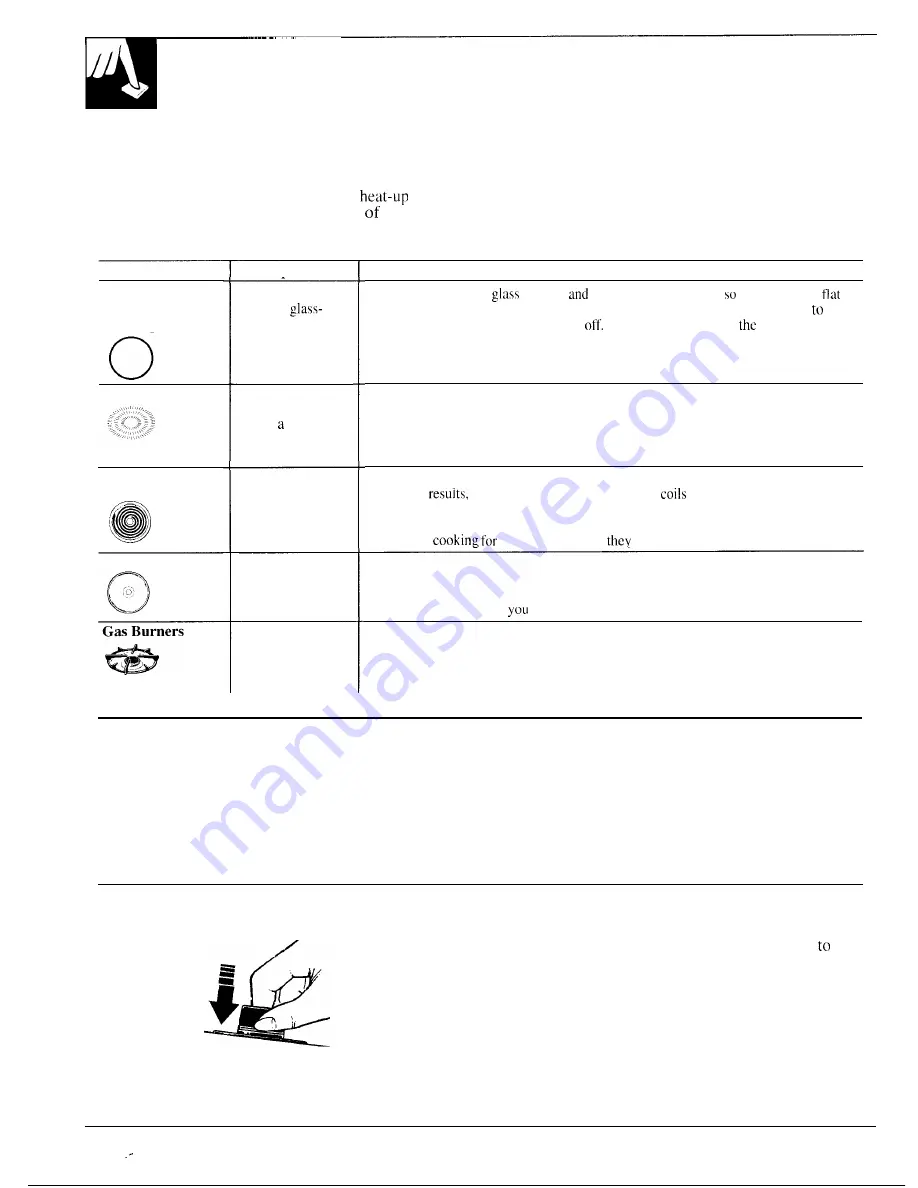
HOW DOES THIS COOKTOP COMPARE
TO YOUR OLD ONE?
Your
new modular cooktop may have several
The following chart will help you to understand the
types of cooking surface units. You will notice
differences among the various cooking surface units
some differences when you use each one.
and how they differ from others you may have used
The best types of cookware to use, plus
and
in the past.
cool-down times, depends upon the type
burner or
electric surface unit you are using.
Type of Cooktop
Radiant
(Glass Ceramic)
Cooktop
Induction
Electric Coil
o
Solid Disk
Description
Electric coils
under a
ceramic cooktop.
High frequency
induction coils
under glass
surface.
Flattened metal
tubing containing
electric resistance
wire suspended
over a drip pan.
Solid cast iron
disk sealed to the
cooktop surface.
Regular or sealed
gas burners use
either LP gas
or natural gas.
How it Works
Heat travels to the
surface
then to the cookware, pans must be
on
the bottom for good cooking results. The glass cooktop stays hot enough
continue cooking after it is turned
Remove the pan from
surface unit if
you want cooking to stop.
Pans
must
be made of ferrous metals (metal that attracts a magnet). Heat is
produced by a magnetic circuit between the coil and the pan. Heats up right
away and changes heat settings right away, like a gas cooktop. After turning the
control off, the glass cooktop is hot from the heat of the pan, but cooking stops
right away.
Heats by direct contact with the pan and by heating the air under the pan. For best
cooking
use good quality pans. Electric
are more forgiving of
warped pans than radiant or solid disks. Heats up quickly but does not change
heat settings as quickly as gas or induction. Electric coils stay hot enough to
continue
a short time after
are turned off.
Heats by direct contact with the pan, so pans must be flat on the bottom for good
cooking results. Heats up and cools down more slowly than electric coils. The
disk stays hot enough to continue cooking after it is turned off. Remove the pan
from the solid disk if’
want the cooking to stop.
Flames heat the pans directly. Pan flatness is not critical to cooking results, but
pans should be well balanced. Gas burners heat the pan right away and change
heat settings right away. When you turn the control off, cooking stops right away.
SURFACE CONTROLS
At both OFF and HI the control “clicks” into position.
Switching heats to higher settings always shows
When cooking in a quiet kitchen, you may hear slight
a quicker change than switching to a lower setting.
“clicking” sounds—an indication that the heat settings
you selected are being maintained.
How to Set the Controls
Push the knob
in and turn in
either direction
to the desired
heat setting.
The control must be pushed in to
Be sure you turn the control
set only from the OFF position.
OFF when you finish cooking.
When the control is in any
The surface unit “ON” indicator
position other than OFF, it may
be turned without pushing it in.
light will glow when ANY heat
on any module surface unit is on.
10

















